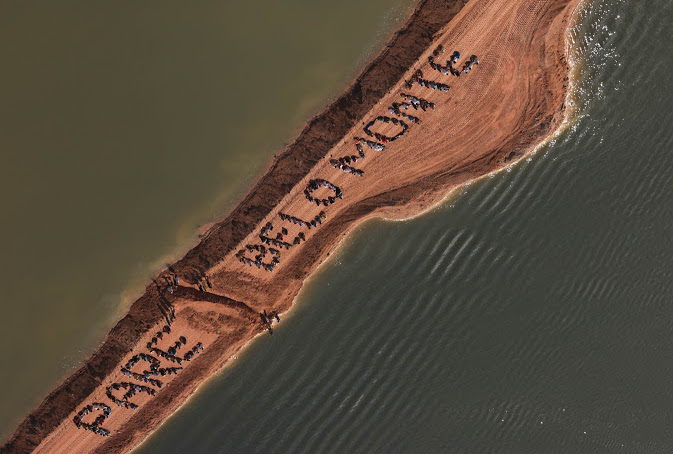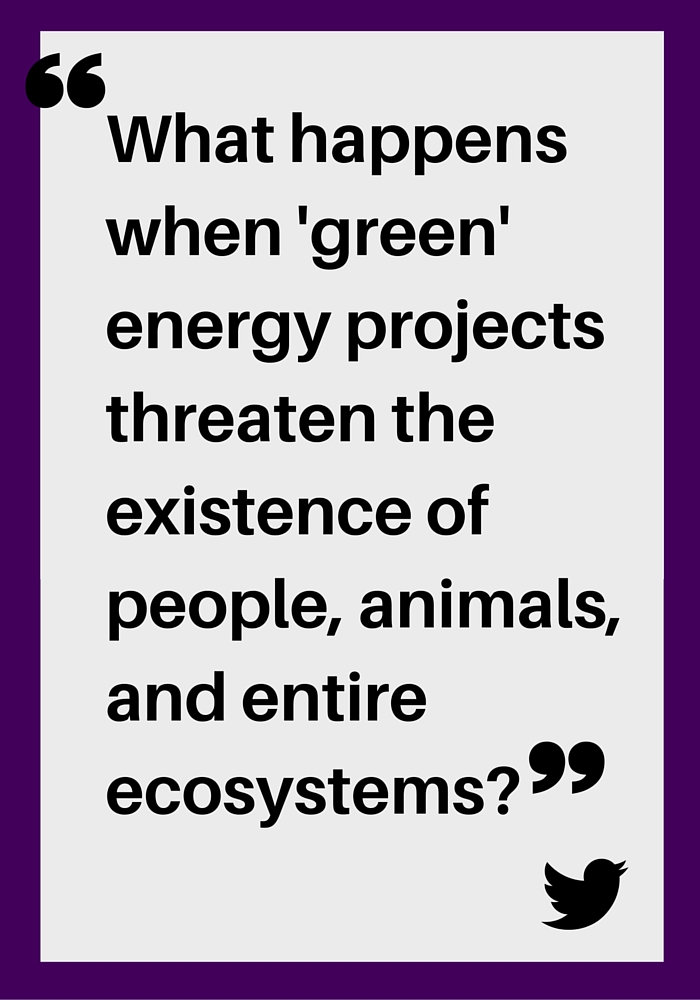In the fight to stop climate change, many people paint carbon-neutral energy as the solution to saving the planet. But what happens when “green” energy projects threaten the existence of people, animals, and entire ecosystems living on it? Is “green” energy really the solution when it comes at such a cost? As Brazil invests heavily in hydroelectric energy projects in an effort to reduce greenhouse gas emissions while still growing its economy, the country’s indigenous movement is fighting to answer this very question.
One of the largest and most biodiverse countries in the world, Brazil is on track to get 66 percent of its electrical energy from dams by 2030. Currently more than 250 dams are planned for construction on the Amazon River alone. The government has hailed these projects as a carbon-neutral renewable solution and has become increasingly aggressive with its carbon reduction goals, committing to cutting its emissions by 37 percent by 2025. But independent scientists contend that these dams, in fact, have tremendous carbon impacts.

Three hundred people occupied the Belo Monte Dam, standing together to form the words “Pare Belo Monte” or “Stop Belo Monte.” Image by Atossa Soltani.
And while supporters laud hydroelectric energy as “green,” it still has a devastating impact on the environments and people, who are often indigenous, living around the dams. In addition to its natural diversity, Brazil has over 240 indigenous tribes, many of whom depend on the country’s extensive river systems to survive.
The Belo Monte dam has been the most controversial such project, opposed by environmental and indigenous groups since the first construction license was granted to the Norte Energia consortium years ago. This $11 billion dollar mega-dam will be the third largest in the world, and threatens the environment and people living along the Xingu River where it’s been built. If and when the project goes ahead and the reservoir is flooded, it will cover such an enormous area of the Brazilian rain forest that as many as 20,000 people could be displaced and whole tribal cultures could be lost.
When this happens, indigenous and marginalized women will suffer the most. We’ve seen it happen around the world: when communities are threatened by displacement, climate disaster, or pollution, it falls on women to do extra care work, to find food, fuel, and water when it’s scarce, and to hold the community together in the face of danger and instability.
Already, the construction of the Belo Monte dam has negatively impacted the communities living around it. Tens of thousands of migrants have settled in the area to work on the project, which has spurred development to support the newcomers. Just as in the oil boom towns of North Dakota, this sudden influx of laborers has lead to an increase in sexual violence against women and children and sex trafficking, what has become a predictable result of development projects where huge numbers of migrants come to work in unregulated, rural areas. Also predictably, indigenous women are often the targets of this violence.
In response to the harms brought on by the dam, indigenous people have lobbied, marched, and protested. Sonia Bone Guajajara, one of the leaders of the Association of Indigenous Peoples of Brazil (APIB), has traveled around the world to speak out against the dam and the movement to strip indigenous people of rights and land in Brazil. She has become one of the faces of the global indigenous rights movement, arguing that protection of indigenous territories is fundamental to conservation and maintaining the appropriate equilibrium for this planet to remain habitable for humans. “The preservation of our planet lives in the ancestral knowledge of indigenous people,” she while attending last year’s COP20.
Despite the intense opposition from people like Guajajara, the project has continued to move forward thanks to the numerous small concessions Norte Energia has promised to impacted communities. Many of these people are already severely marginalized and very low-income, unable to withstand the strain that protesting the dam puts on their ability to fish and gather food. So some have accepted the consortium’s promises to help mitigate the harm to those displaced by providing resources in the form of housing, health units, vehicles, generators, and food.
 However, Norte Energia has fulfilled very few of the obligations it committed to before building the dam. In September, days before the region was expected to be flooded, Brazil’s environmental protection agency halted the licensing for the dam, citing at least 55 breaches of contract on the part of the consortium. The $11 billion mega-dam sat finished but not operating until November 25, when Norte Energia was granted the authorization in spite of clear evidence that it still had not complied with conditions necessary for construction.
However, Norte Energia has fulfilled very few of the obligations it committed to before building the dam. In September, days before the region was expected to be flooded, Brazil’s environmental protection agency halted the licensing for the dam, citing at least 55 breaches of contract on the part of the consortium. The $11 billion mega-dam sat finished but not operating until November 25, when Norte Energia was granted the authorization in spite of clear evidence that it still had not complied with conditions necessary for construction.
Brazil’s anti-dam movement is a textbook example of why indigenous people must have a place at the climate negotiation table. What good are carbon-neutral energy projects when they destroy habitats, species, and threaten the people — some the most marginalized and under- resourced in the world — who have done the most to protect our environment? Guajajara puts it perfectly:
“We must guarantee indigenous territories in order to save all of our lives. Indigenous peoples’ contribution to the equilibrium of the climate, to the conservation of biodiversity, and to the preservation of territories will also save the lives of these people who in this moment are proposing economic development. This economy doesn’t guarantee life, what guarantees life is land.”
Leading up to COP21, Brazil has been praised for its carbon cutting pledge, which is sadly one of the most aggressive commitments any developed country has made. But given that this commitment is wholly dependent on an energy system that displaces and threatens the survival of local communities, Brazil does not deserve its title as a climate leader.
A 37 percent emissions reduction is not an acceptable price for destroying ecosystems, habitats, and communities. There is nothing green, clean, or just about energy produced by treating people as collateral damage.
Join Amazon Watch and activists around the world by signing this petition to call on the world leaders gathering for the Paris climate talks to reject the Belo Monte dam.
Header image: Ruy Sposati via Amazon Watch

Join the Conversation